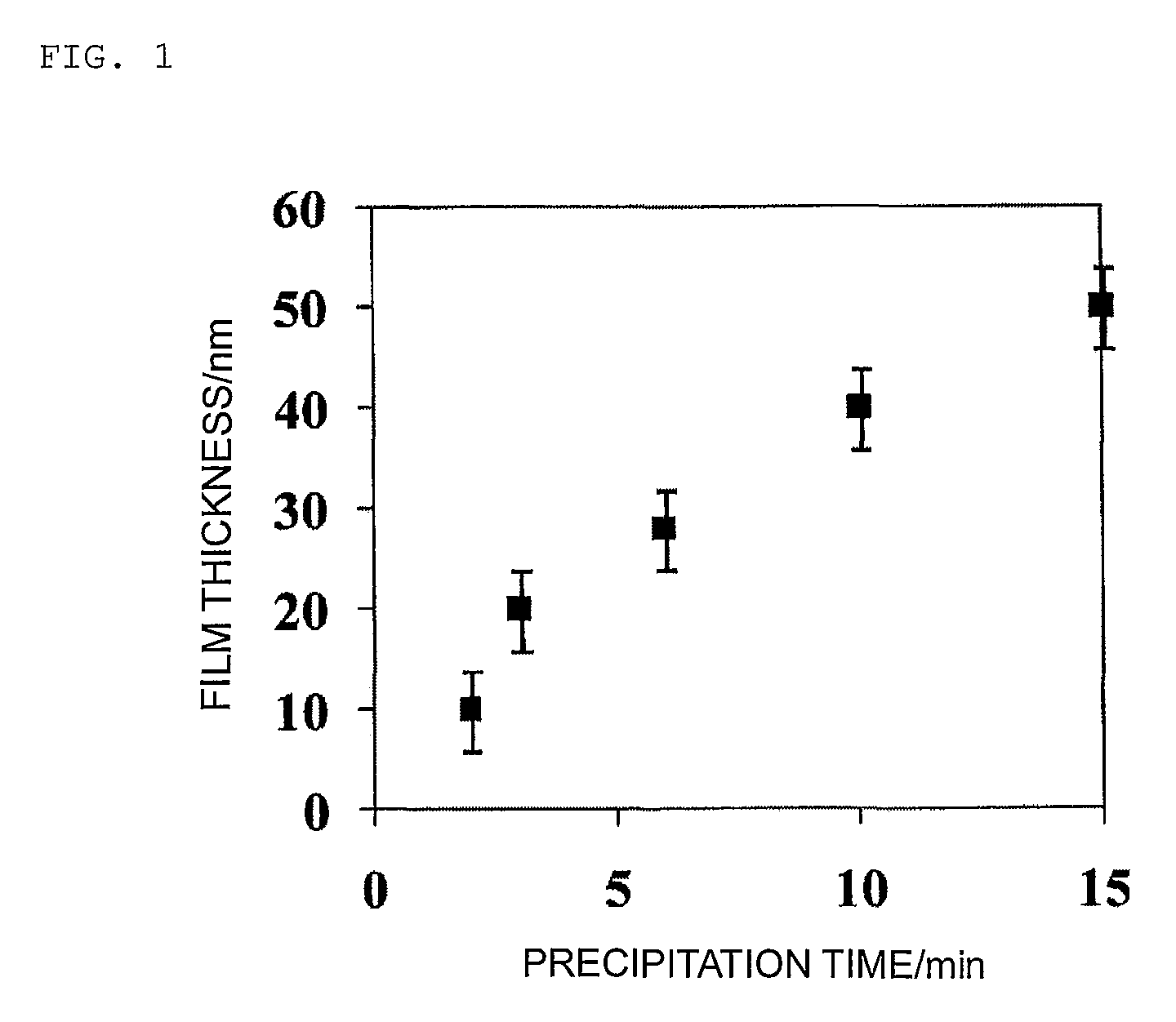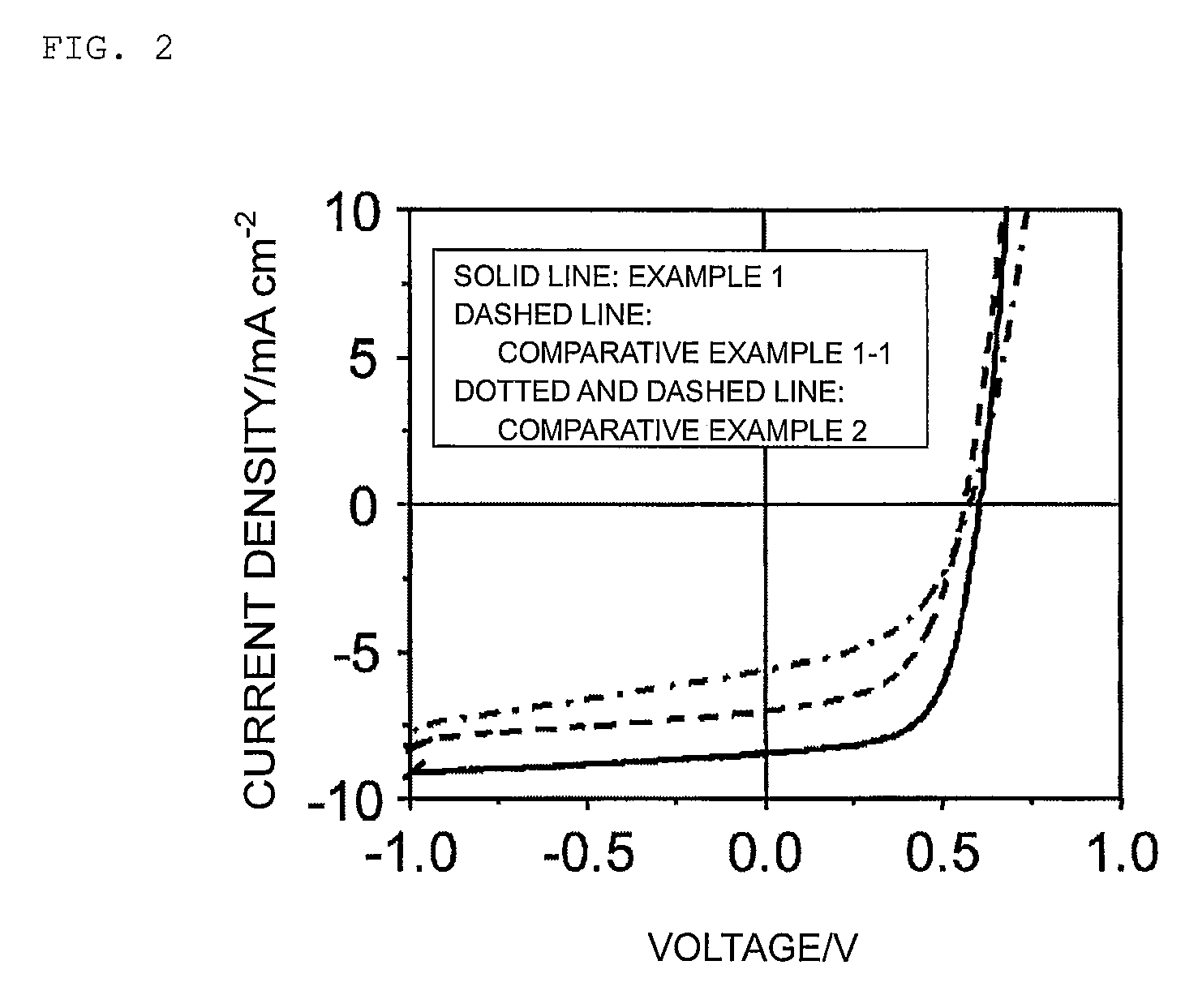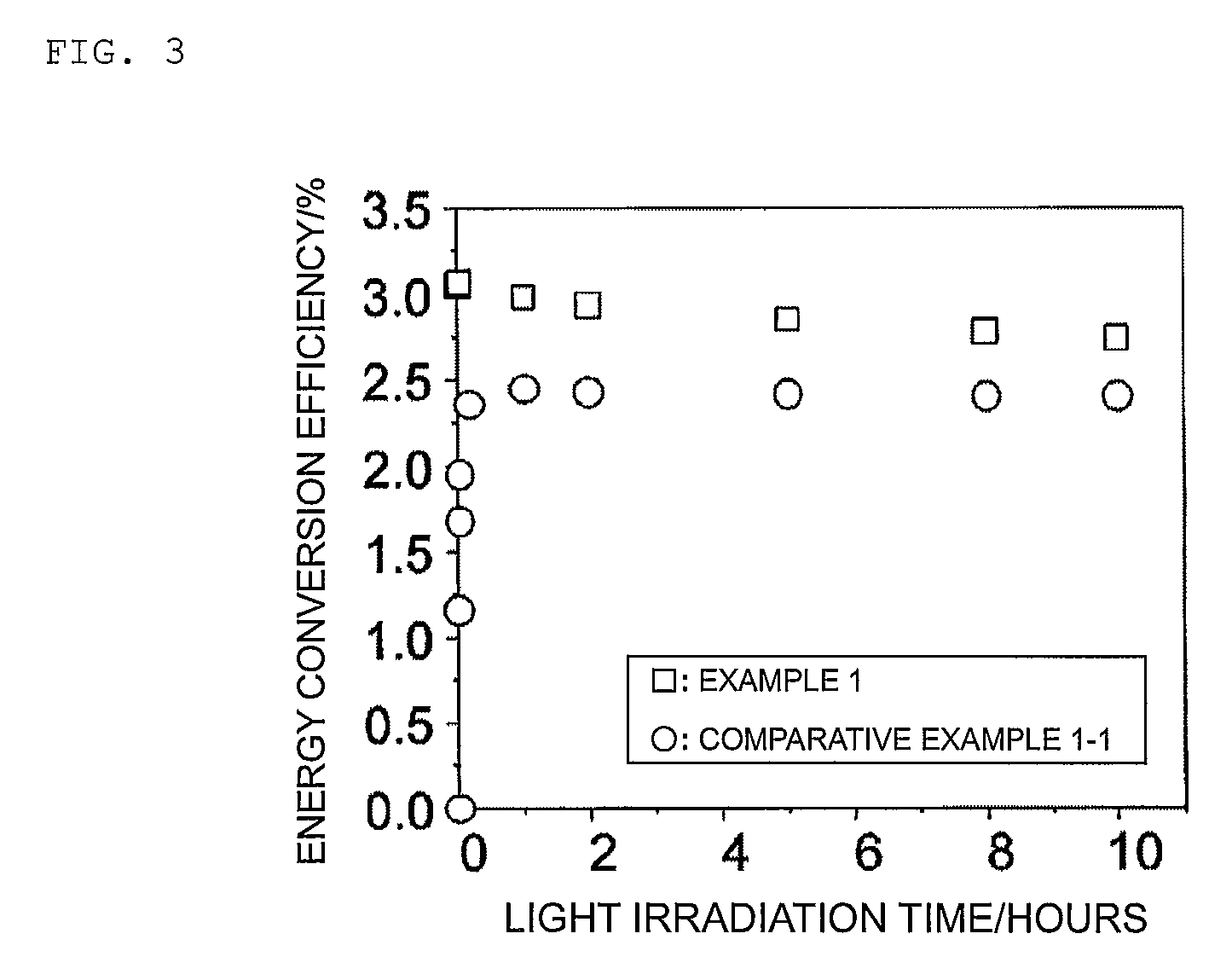Hole blocking layer and method for producing same, and photoelectric conversion element comprising the hole blocking layer and method for manufacturing same
a technology of photoelectric conversion element and hole blocking layer, which is applied in the direction of sustainable manufacturing/processing, final product manufacturing, nanoinformatics, etc., to achieve excellent hole blocking ability and light transmissivity, and high initial photoelectric conversion efficiency. , the effect of excellent durability
- Summary
- Abstract
- Description
- Claims
- Application Information
AI Technical Summary
Benefits of technology
Problems solved by technology
Method used
Image
Examples
first embodiment
I. First Embodiment
1. Hole-Blocking Layer
[0055]In the present invention, the hole-blocking layer denotes a layer that is disposed between an organic semiconductor layer and an electrode in an element that comprises the organic semiconductor layer and the electrode electrically connected to the organic semiconductor layer, and that suppresses electrical conduction between the organic semiconductor layer and the electrode from being carried by holes. The characteristic of suppressing the passage of holes, elicited by the hole-blocking layer, is referred to as hole-blocking ability.
[0056]The hole-blocking layer according to the present invention comprises substantially amorphous titanium oxide. Herein, “amorphous titanium oxide” denotes titanium oxide that contains also titanium oxide having an atomic ratio between oxygen and titanium other than the stoichiometric ratio (titanium:oxygen=1:2), and that has a structure lacking long-range order (over several hundred to several thousand at...
second embodiment
II. Second Embodiment
[0146]The present invention provides, as a second embodiment, a hole-blocking layer that is produced according to a process that has: a step of bringing into contact a nonaqueous solution (hereafter, “nonaqueous solution” for short) that contains an organic titanium compound represented by formula (2) below and a lower alkylamine (hereafter, “complexing agent”) such as diethylamine, triethylamine or the like, with the surface of a member (hereafter, “base material”) on which a hole-blocking layer is to be formed, to thereby form a liquid layer of the nonaqueous solution (hereafter, “nonaqueous solution layer”) on the surface of the base material; a step of forming, in the nonaqueous solution layer, a hydrolysis product of the organic titanium compound by hydrolyzing the organic titanium compound included in the nonaqueous solution layer; and a step of drying the nonaqueous solution layer that contains the hydrolysis product of the organic titanium compound.
Ti(OR...
example 1
[0176](1) Production of an Organic Thin-Film Solar Cell
[0177]An aqueous solution (hereafter, “aqueous solution” for short) was prepared that contained 0.03 mol / L of hydrogen peroxide (H2O2) and 0.03 mol / L of titanium (IV) oxysulfate (TiOSO4).
[0178]There was prepared a glass substrate with ITO film (Furuuchi Chemical) resulting from overlaying an ITO film, by sputtering, onto one of the surfaces of a glass substrate (22 mm×38 mm, thickness 1.1 mm). The thickness was 200 nm, and the sheet resistance of the ITO film that made up the light-transmitting electrode layer was 10 Ω / square.
[0179]The face of the glass substrate on the side opposite to the face on which the ITO film was formed was covered with a polyimide film, and the whole glass substrate was then boil-washed in 2-propanol.
[0180]The glass substrate after washing, having the ITO film formed on one face thereof, and the other face covered by the polyimide film, was immersed for 5 minutes in the aqueous solution the temperature ...
PUM
| Property | Measurement | Unit |
|---|---|---|
| temperature | aaaaa | aaaaa |
| thickness | aaaaa | aaaaa |
| temperature | aaaaa | aaaaa |
Abstract
Description
Claims
Application Information
 Login to View More
Login to View More - R&D
- Intellectual Property
- Life Sciences
- Materials
- Tech Scout
- Unparalleled Data Quality
- Higher Quality Content
- 60% Fewer Hallucinations
Browse by: Latest US Patents, China's latest patents, Technical Efficacy Thesaurus, Application Domain, Technology Topic, Popular Technical Reports.
© 2025 PatSnap. All rights reserved.Legal|Privacy policy|Modern Slavery Act Transparency Statement|Sitemap|About US| Contact US: help@patsnap.com



